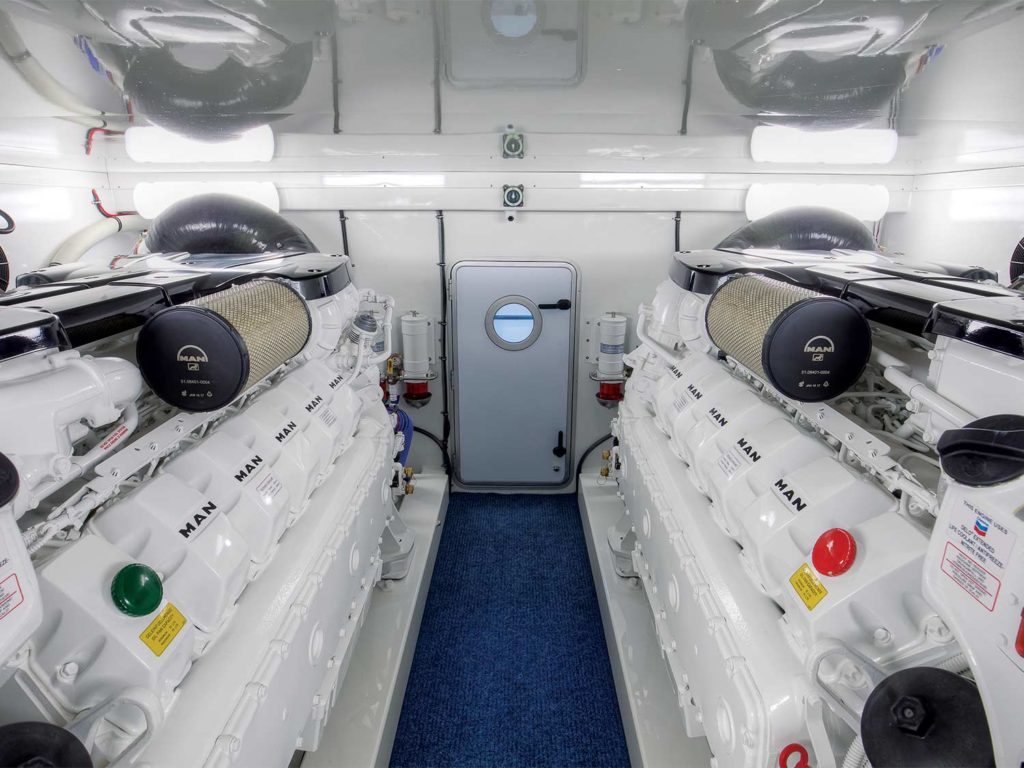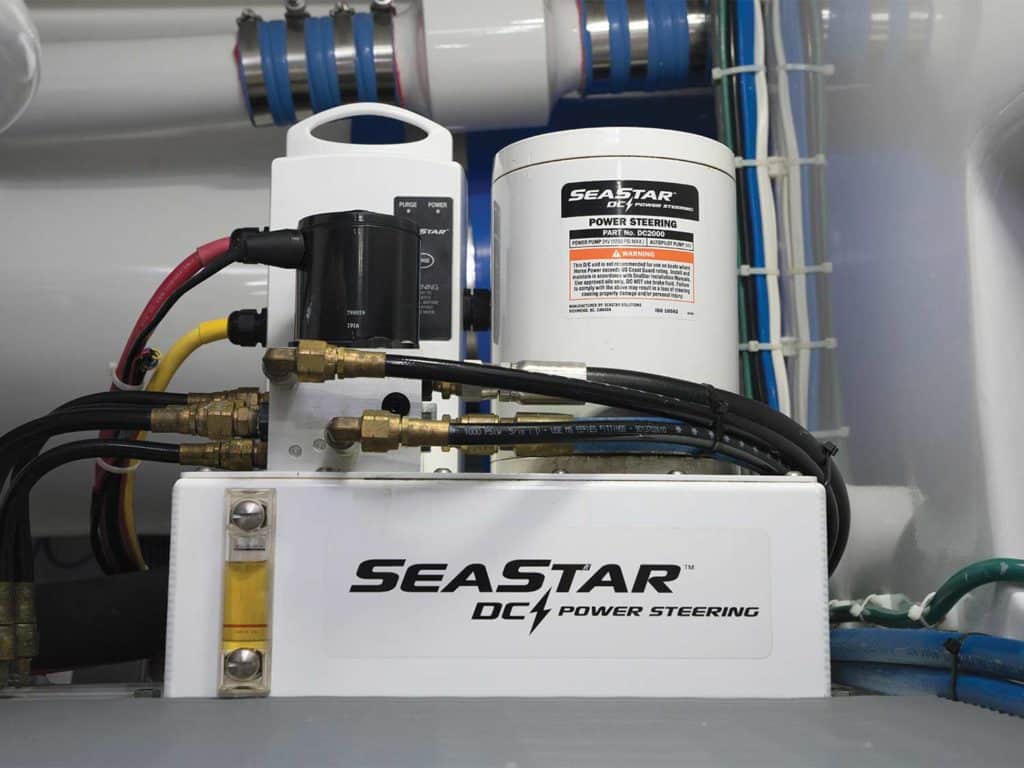
Staying one step ahead is the primary goal when it comes to keeping a clean engine room. It’s said that you can tell a lot about a captain by the way his engine room is kept, so when your reputation is on the line, remember, there’s always a guy standing on the dock who’s ready to jump on the minute you step off.
So, let’s dive in headfirst with tips to not only keep your engine room clean, but your pump room and machinery spaces fresh as well. Instead of going on about the best cleaners on the market or what products to use, I’d also like to introduce some tricks the pros have up their sleeves to leave it not just clean, but sparkling.
Mark removers such as 3M’s Sharpshooter, degreasers such as Spray Nine, or even the environmentally friendly (and smell-good) cleaner Simple Green and some rags will usually do the trick for the initial cleaning of the mechanical components and surfaces themselves, but it’s important to go the extra mile—and that includes the ceiling.
If you’re keen on keeping your engine room in perfect condition, know that it is not, and should not be, a “working space.” When the occasion arises where you must do extensive engine repairs, replace a component, or even conduct an oil change, it’s important to protect the surfaces. Even a small filter or zinc change can wreak havoc on your hard work, so be sure to prep the area for what you’re doing. Cardboard, plastic or tape works best to keep tools from damaging the painted surfaces, and a chamois dedicated to the engine room or wet towels will quell greasy paw prints from taking hold, so clean-as-you-go is usually less daunting when it comes tidying up the job.
Be a Problem-Solver
When scheduled maintenance tasks need to be done, create a process to simplify and minimize the mess. Find a bin or tray that fits under each of your filters when changing them to keep excess oil or water from getting out of control. Even customizing a container to catch each filter’s drippings will take less time than it takes to clean up even the smallest of messes. So unless you enjoy being cramped up in a small space for hours, it helps if you figure out the most time-efficient way to minimize that time.
Keep a stack of oil-absorb pads in the engine room, and slide one under each space you’re working in; keep a set of spare sea-strainer baskets to avoid cleaning them in place—simply drop the clean one in, remove the dirty one from the space and clean it off the boat, storing it for the next time. And should you need to change, for example, a generator raw-water impeller on the fly, it might even be easier to remove the entire pump assembly, put on your spare and remove the old one to be rebuilt later, reserving it now for a spare. The less time you spend putting your dirty hands on everything, the better.
Bath Time
It’s perfectly fine to give your engine room a full bath when it’s needed and when you have some downtime, but unless a serious issue has caused a huge mess, making a habit of wiping down your engine room with a light cleaner/degreaser regularly is usually enough. However, you should commit a time to remove the dust layer or any salt residue with a good rinse and chamois, at minimum, a few times per year, depending on use.
Some boat soap or a light degreaser, a soft scrub brush, some terry-cloth rags and a hose fitted with a snorkel goes a long way; the hose snorkel will keep the water flowing instead of spraying. Evacuation pumps do most of the job when it comes to removing standing water in the bilges and engine beds, but following up with a wet/dry vacuum and a final chamois ensures that no water is left standing on your precious Awlgrip paint finish.
Don’t neglect the ceiling. A polymer sealant applied with a microfiber cloth is a great alternative for protecting that mirrorlike ceiling. Engine-room ceilings don’t normally see the sun, so generally speaking, it should maintain its shine for most of its life, and usually a good wiping with glass cleaner and paper towels will keep it reflecting the fruits of your labor.
When you’re all finished, be sure to crank up the fans. By the next morning, all is dry.
While it might seem scary to get in there and really wash the space, doing it every so often is fine—you just need to be careful, and be cognizant of the electrical-related items such as batteries, battery chargers and alternators, and even turbos and sensors and the like. It’s always a good idea to talk with your mechanic and get a feel for which things can accept water and which cannot.

Track It
Theoretically, especially with new engines, there should be no oil leaks. One way to keep tabs on the health of your engines is to install oil-absorb pads on the floor of the engine beds, fuel-transfer locations, transmission couplers, steering systems and under any other spots that might have leak potential. The engine-room sole is definitely one area that can get away from you, so making sure you contain leaks at the source will keep the bilge cleaner because oil and hynautic fluids will always find the lowest spot to rest. Should a spill occur that you are unable to clean up immediately, laying a few pads in the bilge will contain it best—just be sure they aren’t inhibiting the operation of float switches or bilge pumps.
Don’t just wash away your problems: Before you clean, do a thorough inspection, especially of the hard-to-reach areas —just because you don’t see it, doesn’t mean it’s less important. Soot or exhaust dust could indicate a small exhaust leak or even an imbalanced air-flow situation, so ignoring something that could easily be addressed isn’t prudent. Also, be sure to look out for salt residue. Saltwater intrusion in the engine-room space is a sure sign of something wrong, and even a small saltwater leak could become a bigger issue down the line.
If your job as captain is to maintain your boss’s investment, then keeping it happy and healthy is a sure way to keep your reputation spotless, especially when the vessel goes to survey. And nothing’s more satisfying that watching a surveyor scratching his head and the boat owner receiving that glowing A-plus report.







